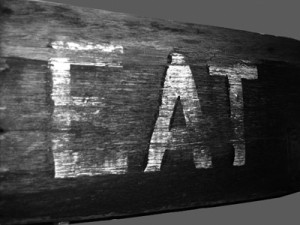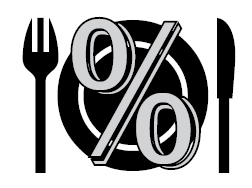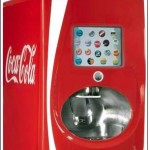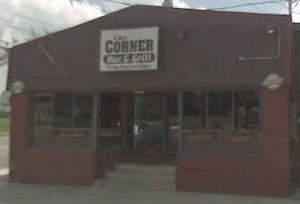
I don’t work in a restaurant. I never have.
Nor do I play a waiter on television.
In fact it would be an uncomfortable stretch to consider any of my past employment to be “service” in nature.
Unless you count the time when I guided a gaggle of goslings out of the roadway. Your call.
I grew up on a major state thoroughfare in rural Michigan. The two-lane road was a major artery for semi tractor-trailer rigs, RVs and law enforcement officers in their shiny, blue Dodge sedans.
Next door to my house was a humble restaurant. In the 1950s it was a drive-in. Named “The Country Drive-In” it overlooked farmland and woods. It provided about eight spaces for motorists to park, grab a burger, a dog, a Coke – basic sustenance to push them towards the completion of their journey. It also had a few picnic tables, important so that weary motorists could sit on dirty, splintered pine boards while eating their meal. After twenty minutes of that, the flat, sun-hot vinyl bench seats in the family wagon seemed plush.
The occasional farmer on his Farmall or John Deere would also stop by to grab a bite and share critical agricultural lies with others engaged in the sow and reep trade.
In the early ’70s, drive-in movies and restaurants were in decline. New owners took over the “drive-in” and a more traditional dining establishment was created. The main building, which wasn’t much more than a kitchen, was expanded to accomodate seating for a goodly quantity of folks. A few years later a salad bar was added. That was followed closely by an investment in a pizza oven.
Rumors persisted for years that the idea to add pizzas to the mix was spawned by one of the cooks, a student at the local high school. I never learned whether or not that was true, but Bart made one incredible pie. Regardless of the party responsible for the idea, pizzas were good and good for business.
Many in those isolated parts had little to no experience with pizza. To some it was viewed as hippie food. So the novelty was, I suspect, what prompted people to give it a try. The comfortable and familiar drive-in made it safe for the conservative residents to give pizza a test chew.
It surely didn’t harm the equation that the pizzas were excellent. To this day, despite having gorged myself on the finest offered by Chicago and New York, my mouth still waters when I remember a Country Drive-In House Special. That was their signature pie – it included nearly everything except fish and boots.
The pizza success lead to yet another expansion of the joint’s footprint. Soon the owners decided to go for a more upscale atmosphere and they sold the pizza-making equipment. That was a mistake, in my eyes at least. Shortly thereafter the restaurant said “Hello” to its third owner, Dolores. The new owner changed the name to Shagnasti. Regulars called it “The Shag”.
During my childhood I was friendly with all of the owners and their families. The air-lock entrance served as my respite while awaiting the arrival of my school bus on frigid winter mornings.
From my before-school vantage point I observed with fascination the operation of the restaurant. It was a fantastic choreography: trucks delivered boxes to the back door and out came a menu of delicious edibles! In the morning they’d be firing up the grill, preparing stock items and bundling flatware and napkins. When I returned from school they already had fed dozens of people and were preparing for the dinner crowd.
As a kid my goal in life was to be able to go in by myself, sit at a table, and order one of my favorites: a cheesburger basket and a Coke. And pay with my own money.
I remember the day that my dream came true. Everyone knew me so I was treated to great service while the crew no doubt exchanged giggles about the little man eating his lunch. I was careful to pick a booth near a window so I could keep an eye on my wheels — a red bicycle with a banana seat.
My family probably ate at The Shag once a week. Tuesday nights were reserved for another dining establishment. That’s when we would drive 12 miles to a place called DiJuancos (pronounced “dee-won-koes”). On Tuesday night they had an all-you-can-eat buffet that included a huge salad bar and, a favorite for my parents, huge golden fillets of lake perch. This was one of those dark, smoky places that were probably just the ticket in the ’40s. It had a wooden dance floor and on certain nights Gene and The Starlighters would play audience requests.
And I must mention the semi-regular breakfasts at a place called Cathy’s Kitchen. Cathy’s was a unique spot. During the week it served as a very popular breakfast, lunch and dinner spot. You’d find small-town political figures, state troopers from the nearby state police post, farmers, truck drivers and other folk.
A major transformation took place on Friday afternoons. That’s when Cathy and her husband Bill geared up to host one of the state’s largest flea markets – run from the counter in front of the grill.
Flea market weekends at Cathy’s was anything but normal. It felt more like a carnival except the clowns didn’t wear the big floppy shoes and the performers were our neighbors. A large number of the attendees looked like they were attending the market only by permission of someone in authority…if you get my meanin’.
Even though my family ate in public on a regular basis, we did have quite a few meals at home. My father was a house-husband before it became P.C. and he handled the bulk of the shopping and the cooking, though he didn’t touch the laundry: mom wouldn’t let anyone touch her washing machine.
Like anyone who takes their kitchen prowess seriously, paw had his specialties for which he was famous: homemade donuts, ice cream, and his famous chocolate layer cake with whipped cream and bananas.
He wrote his own cookbooks over the years, documenting what worked and what didn’t (he was sometimes alone in his assessments of “success” however).
He also went through two distinct winemaking phases: dandelion and rhubarb. I think he got a great deal of pleasure out of the process. The high level of effort required made his wine-making a relatively short-lived chapter in my dad’s dining dabblings. Which was fine for me since I was tasked with picking dandelions during the Dandelion Wine Summer. He thought of it as great privilege while I wondered what I’d done that was so wrong to deserve such punishment.
To this day I regularly eat in public, about once per day. I know how to cook, and I actually enjoy it. However I choose to eat in public for various reasons. One of the reasons is that until I was 43 I was single and cooking for one is a drag. You end up eating the same thing for days on end. Not to mention that many items need to be tossed before they are eaten.
I make a mean meatloaf but no matter how good it is, after a few dozen servings it’s about as appetizing as it sounds.
In my non-scientific studies I have proven to myself, with some bias perhaps, that eating in public costs about the same as eating at home. Of course I don’t make a daily habit of patronizing establishments that lay out multiple forks in the placesetting.
I find that eating in public is great theatre. For the price of a meal, and ya gotta eat anyway, you are able to view all segments of society deal with their business crises, family bickerings, heartbreaks and triumphs.
Think about virtually any major event in life and eating in public will be close at hand. Success, accomplishments, and other happy times are celebrated and shared around a table with food and service.
Similarly when we are forced to process the challenges in life, we use food and drink as a distraction. Often public dining with a friend or two allows for the type of interpersonal communication that cannot happen elsewhere.
A booth in a public eating establishment is a calming vehicle. You say more, you think more deeply and you drink lots of coffee. Perhaps problems are not solved, but weighed, shifted and balanced so that we are able to shoulder the burden, tip the server, walk past the hostess and resume our regularly scheduled lives.
I like to people-watch. Generally you don’t hear that from someone who has yet to start their subscription to Modern Maturity, but there it is. I like to observe and pigeonhole people into categories. I write mental back stories and dramas for those whom I observe. I am able to predict with fair reliability what people are going to do or say next. It’s terribly fascinating. And eating in public is the only way to engage in such a pursuit without getting a license, hanging out a shingle and paying for malpractice insurance. Or being fitted for one of those slimming canvas suits with the wrap-around arms.
There are of course other places to observe the human animal, but eating in public provides the most variety. In no other location are your subjects a captive audience. Restrained by their hostess-assigned seating, they stay in one place and deal with their issues.
While eating in public, you are able to stare at your subjects. Try that in a mall, on the street or at the grocery store. I contend that you can’t do it. People notice, feel threatened and if they don’t contact the local constabularly, they break off the performance that you intended to observe.
There’s some special security that people experience when surrounded by menus and little blue packets of Equal. There are just enough other people and minor distractions that you can get away with blatant snooping without detection. It’s far better than going through someone’s medicine cabinet where you invariably drop some heavy glass object into the sink, thus giving away your clandestine activities.
Consider the other things that we do to sustain our lives and comfort. Breathing and blinking are almost always done in public. It would take a freak of coordination to accomplish such necessary functions in private.
Most matters of personal hygiene are attended to behind closed doors, or at least only in proximity to close relations. You don’t often see strangers assembled in public to brush their teeth, floss, clip their nails, jamb Q-tips in their ears, pluck wayward hairs or lather, rinse and repeat.
Yet that basic human need of ingestion is shamelessly carried out in front of others. And joyfully so.
I can make no claim to being well-traveled, but I have been to a dozen states, including Canada. From coast to coast, with very little variation, menus are the same. That is absolutely mind-boggling to me. In most other businesses, uniqueness and inventiveness are encouraged to differentiate one from the competition.
I suppose a restaurant’s offerings are just too sacred to meddle with. Restaurants are unwavering when it comes to their rigid stance on what to offer the dining public.
Places that serve breakfast, of which I have the distinct sense the number is dwindling, can be counted on to serve up unrealized chickens in a wide variety of presentations. Eggs come sunny-side up, over-easy, over-medium, over-hard, scrambled, soft-boiled, hard-boiled and finally, for the really particular, poached.
When I was a child, eggs frightened me. But not at home. At home they were safe because my dad was doing the cooking. But “out” was a different matter. Ordering eggs required membership in an exclusive club. You had to know the secret handshake, the password to the fort. It was a mystery to me.
I ordered french toast only to avoid making an embarassing egg-prep faux pas. It can be very traumatic to a child, being exposed as an egg novice. (Later in life I learned a similar mystery would confront me when it came to “medium” versus “rare”). For the most part you can expect the server to be poised. But I always feared their ridicule, knowing look, questioning glance toward one of my adult keepers or, worst of all, a query for more egg-prep-preference information!
After the eggs come the major bread groups: french toast and pancakes. Like many other foods in our lives these two have ulterior motives. They exist purely as vehicles for butter and maple syrup intake. You probably didn’t know that, but it’s true. Neither french toast nor pancakes have any flavor nor nutritional value. I have tried and failed to breakfast on butter and maple syrup using only a spoon, spatula or saucer. Such efforts are doomed to failure.
Of course omelettes come to mind for breakfast. Here again we see the traditional: cheese, Denver or Western.
When I was a kid, eating breakfast at Cathy’s Kitchen, they had a real award-winner in my book. A Taco Omelette. Once in a while you’ll run across a chili omelette or some variant, but the Taco was some good eats. It consisted of ground beef cooked with taco seasonings, lettuce, tomatoes, onions, cheese and a dolop of sour cream. I ordered it with an english muffin on the side and was ready to go!
That pretty much summarizes a public breakfast in this nation.
Lunch across America is a hamburger. And I have absolutely no problem with that. Properly garnished, a hamburger represents a totally satisfying meal that fits between your fingers. It is concise, complete and satisfactory. If we were to somehow lose our hold on the hamburger as the result of some misguided foreign trade negotiation, I feel that the fabric of the U.S. might very well unravel.
Apart from the hamburger and its variations, we have a few other sandwiches and sundry shapes of deep-fried flesh. Most of it pulled out of freezer boxes in a frosty white form, dropped into a vat filled with a mysterious bubbling fluid and removed crispy, golden and dripping with goodness.
My years of dining experience have revealed to me a very reliable way to gauge the overall quality of a dining establishment. The reuben. While I continue to despise its name, this sandwich remains one of my favorites.
I have found that an establishment that creates a good reuben sandwich generally does a good job with all of its offerings. The reuben gives good clues as to how serious a joint is about ingredient selection.
Quality ground beef can make a burger, but the ingredients in a reuben are much more subtle. While I find myself at a loss to quantify what makes it good, passable or totally without merit, I am satisfied to trust my palette. A reuben sandwich is a delicate work of balance and artwork. I have been both blessed and cursed to ingest reubens from both sides of the track. When done well, it is a hallmark among sandwiches.
I know of a man who makes a similar judgement about breakfast. In my youth this man was pivotal in instructing me on how to get past my egg-ordering phobia. Prior to his input I always requested my eggs to be scrambled. There is not a thing wrong with a scrambled egg. However any choice in life that is made in ignorance is certainly not optimal.
Whenever ordering an egg-based breakfast Richard would request that his eggs be prepared in the same manner as the cook prepares them at home. Because there is finesse and art in egg preparation he believed that you stood a better chance to achieve quality by going with the cook’s choice. Besides, the element of surprise can be a tremendous motivator in the morning.
Ketchup is most-likely America’s favorite condiment. For just about any other food item you can hear those arguing “for” or “against”. Ketchup is different, I think. Except for a few crazies who use it indiscriminantly on everything from hashbrowns at breakfast to pasta at dinner, I cannot imagine anyone making negative comments about ketchup.
There are folks who don’t particularly like ketchup and don’t use it. But you don’t hear their voices raised at the adjacent table calling for a ban on the red puree of goodness. Perhaps it could be argued that they fear fallout from the ketchup-loving majority, but I think it’s deeper than that. It’s respect. Nearly in the same class as the American flag, few dare to go against this thick red mixture – made of a fruit or vegetable, we don’t know which.
And you thought eating in public was just an accident of convenience. Oh, my poor, ignorant eater…it is so much more. So much more.
 I recently gave serious consideration over how much to tip our waitress at one of our favorite sushi joints.
I recently gave serious consideration over how much to tip our waitress at one of our favorite sushi joints.




